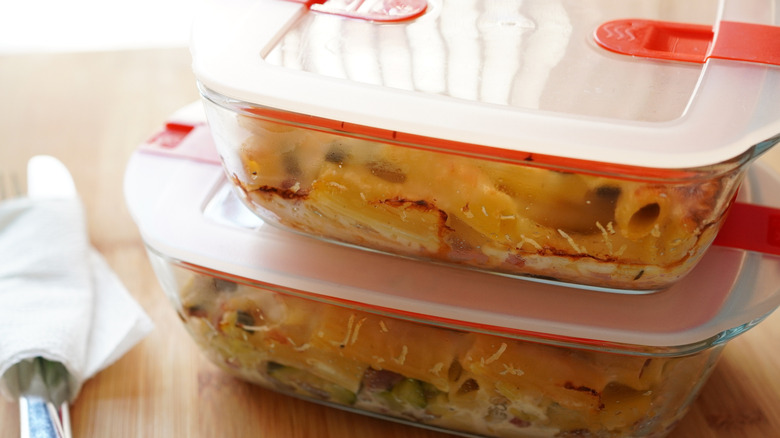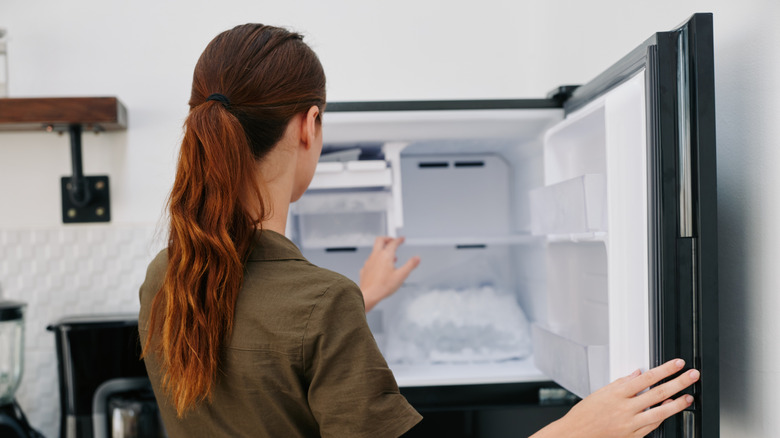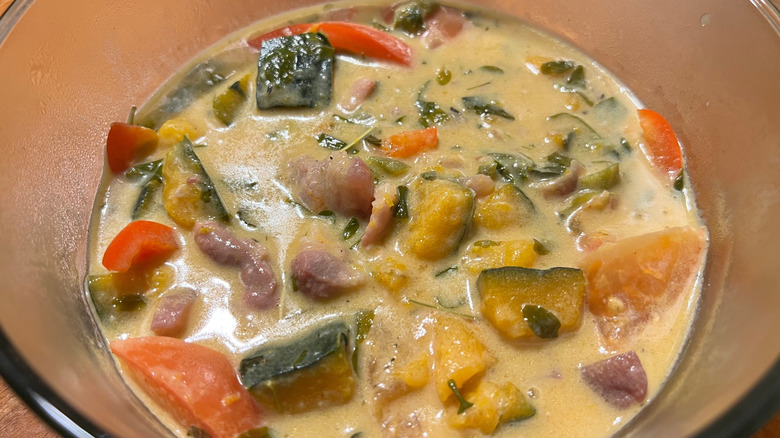Can You Put A Glass Storage Container In The Freezer?
If you're someone who loves to meal prep, your kitchen cabinets are likely full of different types of glass jars and containers you use to store food. You've probably found yourself wondering whether you can safely stick them in the freezer. The short answer? In many cases, yes — but not always, and you'll need be mindful of how you do it. Compared to plastic food storage containers or freezer bags, glass containers are more durable, easier to clean, and free from BPA and other hormone-disrupting chemicals. However, glass is much more temperature-sensitive than plastic. Put the wrong container in your freezer, and the glass could break, damaging it and rendering your home-cooked meal inedible. Womp, womp.
One key tip is to use glass storage containers that are explicitly marked as "freezer-safe," either with that phrase or a snowflake icon. Often made from borosilicate glass or tempered glass, these bad boys are designed to better withstand temperature fluctuations without cracking than, say, soda lime glass. You can freeze your leftovers in them with greater peace of mind — that is, as long as you let hot foods cool down first and leave some extra wiggle room in the container.
The science behind why glass containers can crack in your freezer, and how to prevent it
Wondering why glass food storage containers can be so dang finicky? It's this pesky little effect scientists refer to as thermal shock, and it's due to the container's temperature changing so sharply and abruptly when it goes from warm or hot to ice cold in the freezer. Glass easily succumbs to thermal shock, which is why freezer-safe containers are a smart idea. These are reinforced with additional materials that reduce the likelihood of thermal shock. For instance, the classic cookware brand Pyrex traditionally used the chemical boron to fortify its borosilicate glass containers. It now also uses tempered glass, which is also generally safe to freeze.
Per FDA guidelines, your freezer should be set at the optimal temperature of at or just below 0 degrees Fahrenheit. Before putting your glass container in the freezer, allow the food within it to cool down on your kitchen counter so it reaches room temperature. This will make the temperature difference less drastic once you stick it in the freezer, which, in turn, will prevent thermal shock from kicking in and stop your glass container from breaking.
How and why you should leave extra space in glass containers when freezing your food
Freezer-safe glass containers are your safest bet if you often cook in large batches or like to freeze your leftovers and reheat them down the line. However, even if you're using freezer-safe glass, you still have to be mindful of how high you fill your containers. Are you storing a soup, stew, broth, or some other liquid-based meal? Be sure to leave a generous amount of headspace at the top of the container when you pour in the food.
If you were paying attention in science class during grade school, then you might remember that water expands when it freezes and becomes ice. In the absence of extra space for buffer, that soup or stew could expand so much that it busts your filled-to-the-brim glass container right open — which, again, will ruin the container and your meal. (It's the same reason why freezing temps can cause your pipes to burst in the winter.) That's another potential pitfall to avoid, but with proper preparation and a little extra caution, you shouldn't have any issues using glass containers in the freezer.


